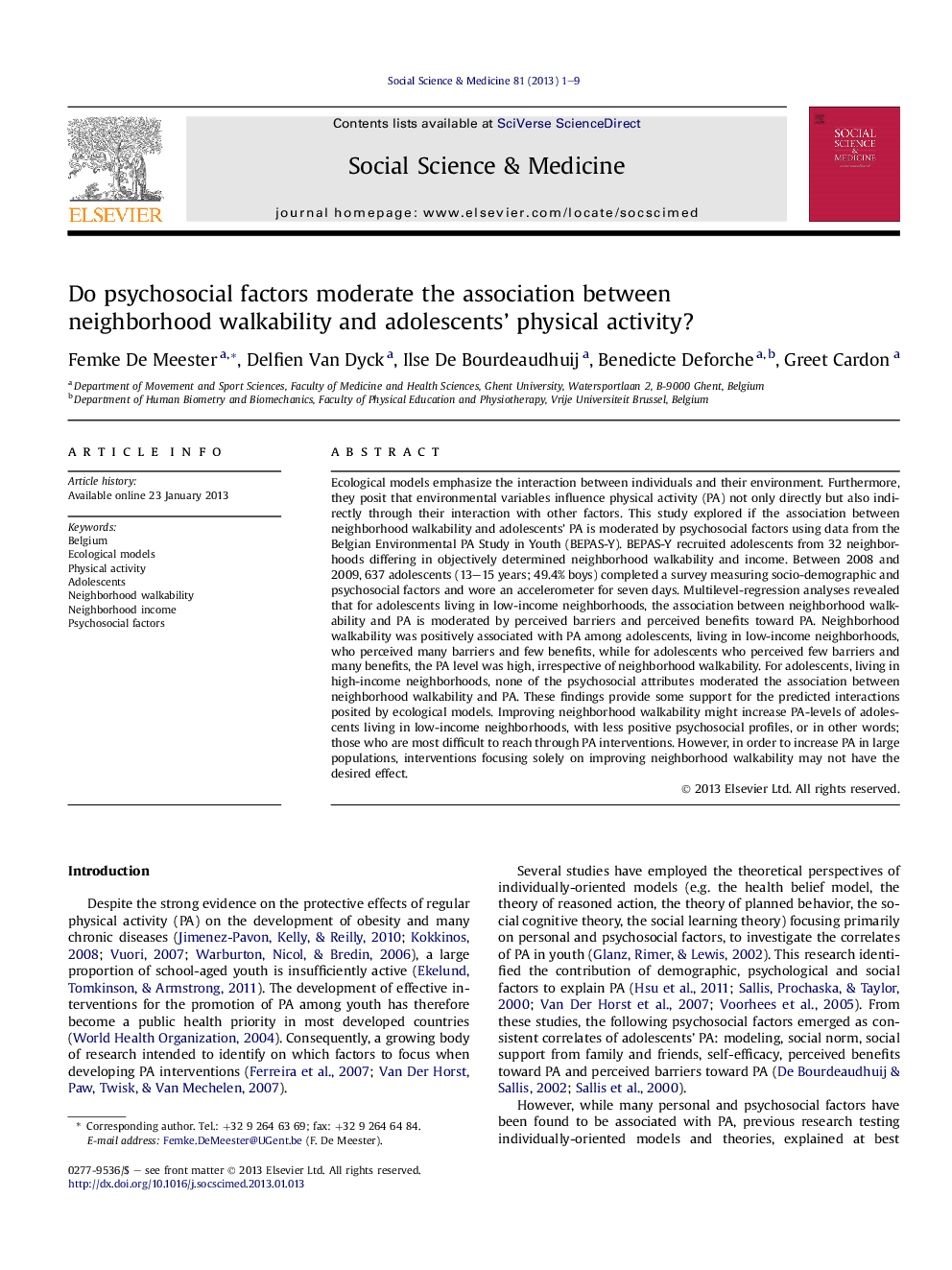| کد مقاله | کد نشریه | سال انتشار | مقاله انگلیسی | نسخه تمام متن |
|---|---|---|---|---|
| 952323 | 1476087 | 2013 | 9 صفحه PDF | دانلود رایگان |
Ecological models emphasize the interaction between individuals and their environment. Furthermore, they posit that environmental variables influence physical activity (PA) not only directly but also indirectly through their interaction with other factors. This study explored if the association between neighborhood walkability and adolescents' PA is moderated by psychosocial factors using data from the Belgian Environmental PA Study in Youth (BEPAS-Y). BEPAS-Y recruited adolescents from 32 neighborhoods differing in objectively determined neighborhood walkability and income. Between 2008 and 2009, 637 adolescents (13–15 years; 49.4% boys) completed a survey measuring socio-demographic and psychosocial factors and wore an accelerometer for seven days. Multilevel-regression analyses revealed that for adolescents living in low-income neighborhoods, the association between neighborhood walkability and PA is moderated by perceived barriers and perceived benefits toward PA. Neighborhood walkability was positively associated with PA among adolescents, living in low-income neighborhoods, who perceived many barriers and few benefits, while for adolescents who perceived few barriers and many benefits, the PA level was high, irrespective of neighborhood walkability. For adolescents, living in high-income neighborhoods, none of the psychosocial attributes moderated the association between neighborhood walkability and PA. These findings provide some support for the predicted interactions posited by ecological models. Improving neighborhood walkability might increase PA-levels of adolescents living in low-income neighborhoods, with less positive psychosocial profiles, or in other words; those who are most difficult to reach through PA interventions. However, in order to increase PA in large populations, interventions focusing solely on improving neighborhood walkability may not have the desired effect.
► The present study findings support some predicted interactions posited by the ecological models.
► In low-income neighborhoods, psychosocial factors moderate the association between walkability and adolescents' PA.
► Improving neighborhood walkability may increase physical activity of adolescents that are most difficult to reach.
Journal: Social Science & Medicine - Volume 81, March 2013, Pages 1–9
